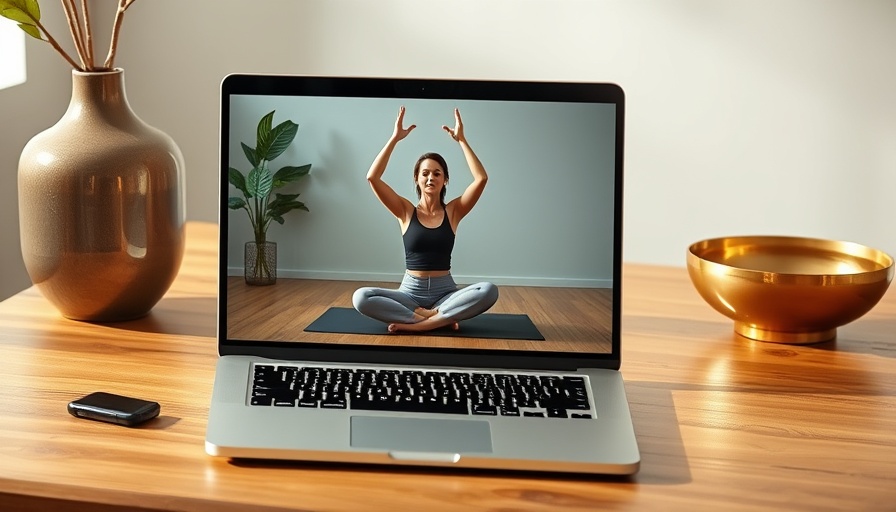
Transforming Screen Time into Active Time
The most prominent form of entertainment and socialization today is screen time. Whether consuming the latest hit series or scrolling through social media feeds, our reliance on screens is both a blessing and a curse. While modern technology offers countless benefits—such as connection and access to information—it also creates the potential for a sedentary lifestyle. Recognizing when screen time encroaches on active time is vital, especially for those of us in the healthcare industry who prioritize wellness.
Embracing Movement with Entertainment
For many, the presence of a screen often signals a moment of stillness. Indeed, televisions are generally static and can promote a long, uninterrupted sit as stories unfold. However, it doesn’t have to be this way. As concierge medical practice owners, finding ways to encourage your patients to embrace activity, even during their screen time, is essential.
One effective approach is to incorporate physical movements into viewing experiences. Set alarms for midway through a movie for a quick stretching session, or consider using a treadmill or walking pad during your viewing. Why not turn that next binge-watching session into a light workout session? Research shows that minimizing sedentary behavior is vital for physical health, and combining physical activity with screen time can create a dynamic experience.
Engaging with Tech for Health
Screen time doesn’t have to be entirely passive. You can actively engage by playing your favorite music or podcast during chores. Engaging the mind can transform tedious activities—even cleaning—into a motivational game or workout. This provides an excellent opportunity to encourage patients to be more proactive about their health, as you integrate movement into daily routines.
Consider suggesting they'll utilize your practice’s digital platforms to provide resources on exercise and wellness tips during non-clinical hours. Tools such as these not only segment out the traditional healthcare narrative but also support a community-oriented approach to health.
Workspaces that Promote Active Living
In the context of professional environments, it’s paramount to shift the notion that work must be sedentary. Many balance their healthcare responsibilities while sitting for extended periods, making them more prone to fatigue and discomfort. By encouraging the implementation of standing desks or adjustable workstations, you can advocate for movements that rejuvenate both mind and body. Set reminders for your teams to take brief breaks every 30 minutes to stand or walk around the office. Just a few minutes of mobility can reinvigorate focus and productivity during work hours.
Utilizing Technology for Exercise
An increasingly popular way to keep active during screen time is by virtue of workout programs available on streaming platforms. Countless online resources—like YouTube channels that specialize in workout videos, yoga, and even dance classes—offer something for every body type. Many people are eager to join online communities that focus on active engagement without needing to leave their homes. Encouraging patients to access these resources can significantly enhance their commitment to health.
Additionally, gaming has evolved into a space where users can engage in physical activity while still enjoying their favorite screen-based entertainment. Fitness video games and VR experiences are viable options that enable users to be active while being entertained, thus aligning with the growing trend of gamified exercise.
Setting Up a Balanced Screen Time Environment
It’s important to facilitate discussions with your patients about the balanced approach to screen time and activity. This shift may require initial commitment and mindfulness about their habits, but the long-term benefits are invaluable. By fostering an understanding of the impact of sedentary lifestyles, you can empower them to take control of their well-being.
Invite your clients to develop personalized routines that combine entertainment with physical movement. For instance, engaging them in challenges to stay active during their favorite TV show could create a sense of community spirit while they work towards better health.
Final Thoughts: Take Charge of Your Health
Incorporating movement into daily routines—especially during screen time—can transform habits and pave the way for improved physical health. Encourage your patients to blend their entertainment with positivity and productivity. Remember, our approach to wellness not only influences our lives but also those around us.
Advocate for a culture where patients view their screen time as an opportunity for wellness and activity, rather than a source of lethargy. Explore ways to integrate active screen time during practice visits, ensuring that health and happiness remain a priority.
 Add Row
Add Row  Add
Add 




Write A Comment